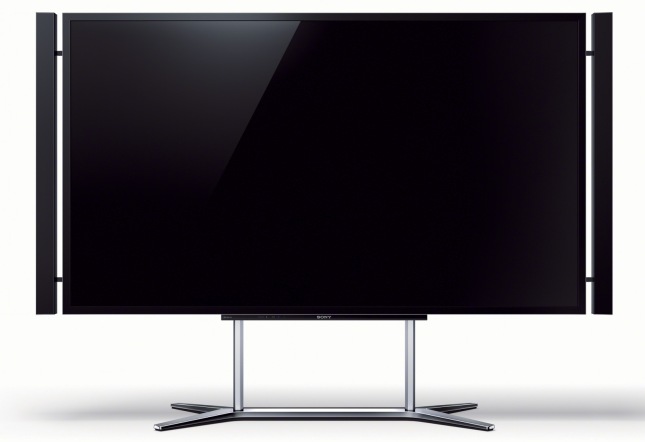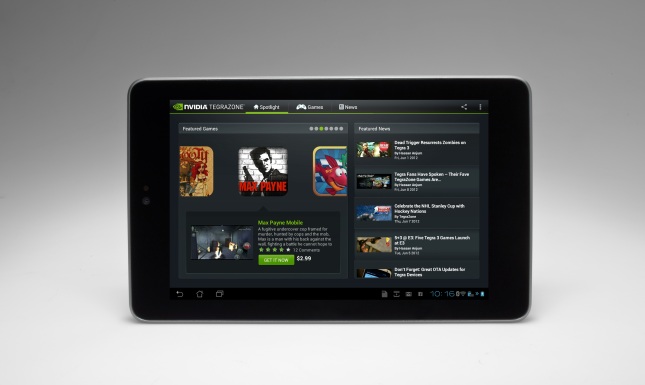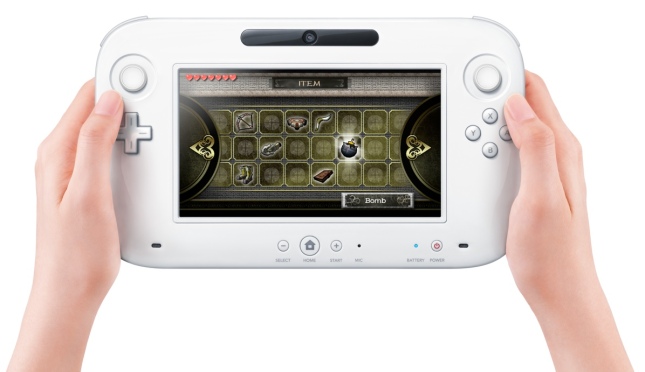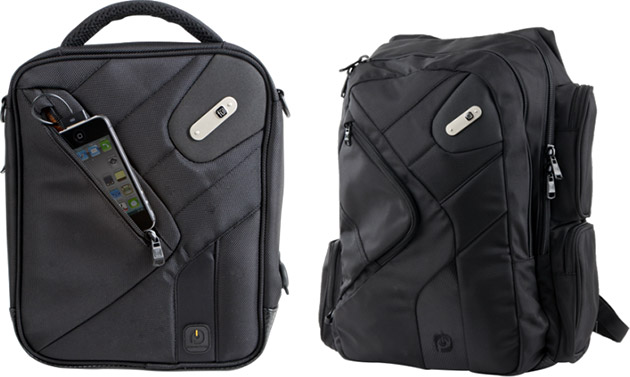The 10 best (or most important) gadgets of 2012
A purely subjective list, of course, but still with some standouts in a sea of stuff
Noah Berger/Bloomberg/Getty Images
Share
With technology advancing exponentially, so too are the number of new gadgets flooding the market. There are indeed so many gizmos coming out on a daily basis that it’s almost impossible to keep track of them.
That’s why, love them or hate them, top-10 lists are especially useful when it comes to this particular theme. All such lists are purely subjective, as is the one I’ve put together below, but they are handy in identifying some of the standouts amid the sea of stuff out there.
Here are the 10 gadgets I liked best – or that I thought were important – in 2012:
10. Sony 4K TV
With everyone already owning an HDTV, it was inevitable that manufacturers would eventually start pushing the next big thing. Sony is one of the first with its 4K TV, with the 4K standing for the more than 4,000 pixels along its width, making it twice as sharp as a regular 1080p model. This 84-inch beast costs $25,000 so it’s clearly not something I’ll be getting any time soon, but it did look sweet in the demo I saw earlier this year. The only question is: how would Santa get it down the chimney?
9. MakerBot Replicator 2
The future is almost here, with 3D desktop printers coming down in price rapidly. The MakerBot Replicator 2, for example, sells for $2,200. Once these things fall under $1,000, the world will change dramatically. We’ll soon be able to manufacture all kinds of things, from coffee cups to toys to umbrellas at home. If the battles over copyright have been fierce so far, they’re about to get a lot nastier.
8. Philips Hue Connected Bulbs
Ever wondered why the walls in future home conceptualizations are always starkly white? It might be because the future of home lighting lies in total user control, which is what Philips’ Hue Connected Bulbs do. The wi-fi bulbs connect to a smartphone or tablet, where you can control their colour and intensity. That way, you can change between a soft, warm reading light to a funky colourful light for parties with a simple swipe. I can’t wait to get my house wired with these babies.
7. Google Nexus 7
Up until this year, the tablet market essentially belonged to Apple and its iPad. But then lo and behold, Google came along with the Nexus 7, a seven-inch tablet that hit all the technical specification sweet spots. More importantly, at an entry price of only $209 (for the 16-gigabyte version), Google nailed the right pricing. As such, the Nexus 7 has been in high demand and relatively hard to get since its debut in the summer. With Apple finally having a successful competitor, the market for tablets has been redefined. Going into 2013, it looks like smaller and cheaper seven-inch tablets are the way to go.
6. Nest Learning Thermostat
The promise of the smart, connected home has been around for ages, but it’s only now starting to become a reality with the ubiquity of smartphones, tablets and digital connectivity. The second-generation Nest Learning Thermostat uses algorithms that adjust to users’ settings, so it fluctuates home temperatures based on their behaviours. It lowers home temperatures when you’re not home or sleeping, then raises them automatically when it knows you’re home and awake. You can also adjust it remotely from your phone with the Nest app. The company behind the device says it typically lowers energy bills by 20 to 30 per cent. With energy costs on a never-ending climb upward, the Nest seems almost like a necessity.
5. Nintendo Wii U
There’s been a debate raging for years about whether Nintendo, the storied Japanese video game company, should stop making hardware. With each successive new generation of game consoles, the company staunchly marches ahead to its own beat with hardware that is dramatically different from competitors. This year’s new entry, the Wii U, follows the pattern in that it requires players to split their games up between two screens: some of it happens on the TV, while other parts take place on the controller itself. The downside of this continued stubborn streak is that Nintendo console buyers eventually get stuck with a dearth of games as developers opt to instead create more software for the standardized hardware from rivals such as Sony and Microsoft. But all things considered, the video game industry would probably be worse off if Nintendo did indeed stop experimenting with unique hardware efforts. Somebody has to push the envelope, after all. In the meantime, the Wii U will be a lot of fun – at least for the next year.
4. PlayStation Vita
Similar to the Nintendo hardware debate, there’s also considerable discussion over whether the portable gaming system space is dead. With tablets and smartphones eating into that casual, mobile space with cheap, quick games, the business case for high-end, expensive systems seems to be evaporating. That notwithstanding, the PlayStation Vita is a fantastic piece of hardware that plays some of those great high-end games, which can’t (yet) be done on tablets and phones. Still, with technology in those devices rapidly advancing, the days of the dedicated portable gaming system may be numbered indeed. The Vita could thus be the last great mobile console.
3. Samsung Galaxy S3
 Just as the tablet market belonged solely to Apple before 2012, so too did the smartphone segment. Sure, Android phones together made up a larger overall share, but no single device was able to match the iconic iPhone – until the Galaxy S3 came along, that is. Samsung’s flagship phone overtook Apple this year – yes, it only happened because buyers were holding off on buying iPhones in anticipation of a new model launching in September, but the temporary shift did signify that the competition had finally caught up. With everyone using (and desperately needing) their smartphones, the S3 may just be the most important gadget of the year since it means the battle is now fully joined. Innovation among competitors is inevitably going to ratchet up and, tied to that, prices are going to head downward. With Google already selling its Nexus 4 for $300, the days of the $700 smartphone may be coming to an end.
Just as the tablet market belonged solely to Apple before 2012, so too did the smartphone segment. Sure, Android phones together made up a larger overall share, but no single device was able to match the iconic iPhone – until the Galaxy S3 came along, that is. Samsung’s flagship phone overtook Apple this year – yes, it only happened because buyers were holding off on buying iPhones in anticipation of a new model launching in September, but the temporary shift did signify that the competition had finally caught up. With everyone using (and desperately needing) their smartphones, the S3 may just be the most important gadget of the year since it means the battle is now fully joined. Innovation among competitors is inevitably going to ratchet up and, tied to that, prices are going to head downward. With Google already selling its Nexus 4 for $300, the days of the $700 smartphone may be coming to an end.
2. Powerbag
This one is completely a personal pick, but I’ve been lusting over the Powerbag since I saw my friend’s a few months ago. The idea is simple: it’s a backpack that has an internal battery, which you can use to recharge your various gadgets. You charge the bag’s battery when you get home so that, when you’re on the road or out on a job and your laptop or phone is running low on juice, you’ve got some backup. This sort of thing is ideal in my line of work. Unfortunately, it’s not yet available in Canada, but I’ll certainly be picking one up on my next visit to the U.S.
1. iPad Mini
Google’s Nexus 7 (and perhaps Amazon’s Kindle Fire) may have set the standard on seven-inch tablets, but Apple’s iPad Mini raised the roof on them. The smaller tablet was my hands-down favourite gadget of the year, simply because it’s so much lighter and easier to use than its larger cousin. Indeed, Apple really should have called it the iPad Air (I’m trademarking that, by the way). Yet, unlike all other competing seven-inchers, the Mini benefits from Apple’s huge catalog of tablet-optimized apps. As I wrote close to its release, the only thing that keeps the iPad Mini from being the ultimate tablet is its lack of a super-sharp Retina display. It would be thoroughly surprising if such functionality isn’t added next year, at which point I suspect the iPad Mini 2 (iPad Air?) will show up on my 2013 best-gadget list as well.








